
Tell us what you need to find a matching loft conversion specialist

Get free quotes from professionals near you

Compare offers and choose the one that best matches your need
- Householdquotes.co.uk
- Stairlifts
Stair Lift: Your Complete Guide to Stairlifts in the UK

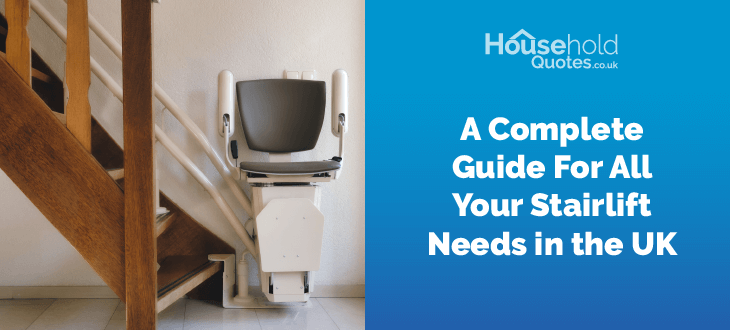
- There are 7 different types of stairlifts like: Straight stairlifts, Curved stairlifts, Platform stairlifts, Outdoor stairlifts, Standing stairlift, Heavy duty stairlift and Reconditioned stairlift
- Typically, a standard straight stairlift's price falls within the range of £2,000 to £4,000, whereas a curved or tailor-made stairlift can range from £4,000 to £10,000 or higher, on average.
- You can explore financial assistance through the NHS, government schemes, local councils, charitable organizations, and health insurance, as well as considering stairlift rental as a more affordable alternative.
Stairlifts have revolutionized accessibility for individuals with mobility challenges, offering a convenient and safe solution to navigate stairs within homes. In the UK, where historical architecture often includes multi-level dwellings, stairlifts have become indispensable aids for those with disabilities or limited mobility.
As technology continues to advance, stairlifts have evolved to provide greater comfort, efficiency, and customization options. This guide aims to provide a comprehensive overview of stairlifts in the UK as of 2024, covering types, features, installation, maintenance, cost of stairlifts, financing options (stair lift hire or renting a stair lift), and considerations for choosing the right stair lift for your needs.
- Describe your needs
- Get free quotes
- Choose the best offer
It only takes 30 seconds

What are the types of stairlifts?
Straight, curved, outdoor, and standing stairlifts are among the most popular varieties. Yet, there exist other less frequently encountered models which offer equal advantages.
Stairlifts are invaluable mobility aids designed to assist individuals who have difficulty navigating stairs due to age, disability, injury, or any condition that limits mobility. These devices allow users to maintain their independence and access multiple levels of their home safely and comfortably.
With various models and configurations available, understanding the types of stairlifts and their specific features can help you select the most appropriate solution for your individual needs and tell you which stairlift is best for you!
Straight stairlifts
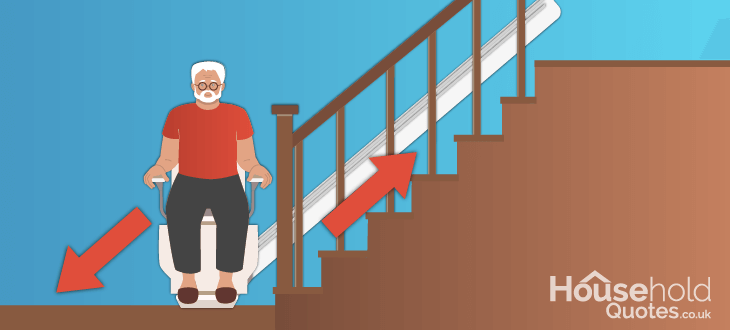
Straight stairlifts are mobility aids designed for staircases that do not have any curves, turns, or intermediate landings. They are the most common type of stairlift and are typically installed on standard, straight staircases found in many homes.
- Straight stairlifts are primarily intended for individuals with mobility issues who have straight staircases in their residences.
- They provide seating, though certain models offer a standing option
- They are relatively straightforward to install, often manageable as a do-it-yourself project with kits available from select manufacturers
- Ideal for straight staircases lacking curves or landings
- Straight stairlifts tend to be the most economical choice due to their simple design and installation process. They tend to be cheapest compared to curved or custom-designed stairlifts.
Stairlift companies like Acorn, Stannah, and Bruno are recognized for their dependable straight stairlift models. Their advantages include affordability, speedy installation, and widespread availability. Some models can even be bought second-hand or rented, offering further cost savings.
These devices cater to those who can still comfortably sit on a chair or platform and require assistance navigating stairs securely.
Curved stair lift
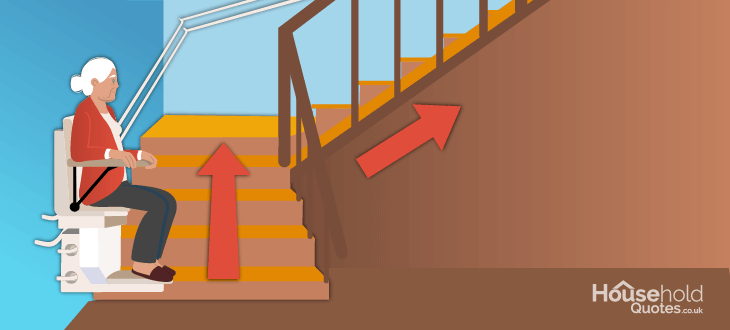
Curved stairlifts are specifically designed for staircases that have curves, bends, or intermediate landings. Unlike straight stairlifts, which are installed on straight staircases, curved stairlifts are custom-made to fit the unique contours of each individual staircase.
- Curved stair lifts come as seating stair lifts
- They are usually complex to install, requiring professional installation to custom-fit the unique contours of the staircase
- They are ideally suited for staircases featuring bends, turns, or spiral designs, providing a solution for navigating such intricate layouts
- However, due to the bespoke nature of their design and installation, curved stairlifts tend to be more expensive compared to their straight counterparts
Notable brands like Handicare, Stannah, and Thyssenkrupp are recognized leaders in manufacturing customized curved stairlifts.
Furthermore, due to the custom nature of curved stairlifts, finding suitable reconditioned models may be less likely compared to standardized options.
Their specialized design addresses the unique challenges posed by irregular stair configurations, providing enhanced mobility and independence for users within their homes.
Outdoor stair lift
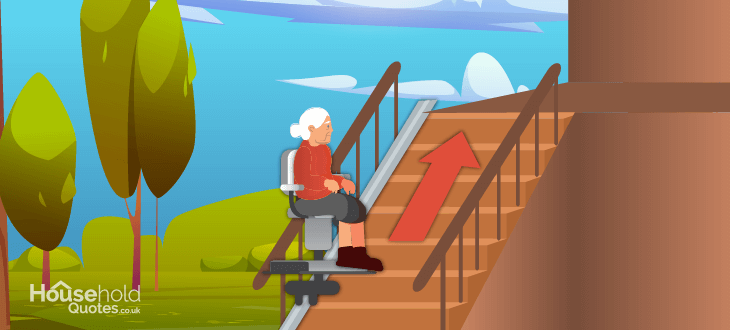
Outdoor stairlifts are specifically designed for outdoor use, providing safe and convenient access to elevated outdoor areas such as porches, backyards, decks, garden paths, terraces, or other outdoor living spaces.
With primarily seating options, the installation process is similar to straight stairlifts but designed to withstand different weather conditions. Brands like Brooks and Acorn offer durable outdoor stair lift models.
Outdoor stairlifts are designed for individuals who require assistance navigating outdoor stairs due to mobility challenges, disabilities, or age-related limitations. These stairlifts require regular maintenance to ensure longevity despite exposure to the elements.
Platform stair lift
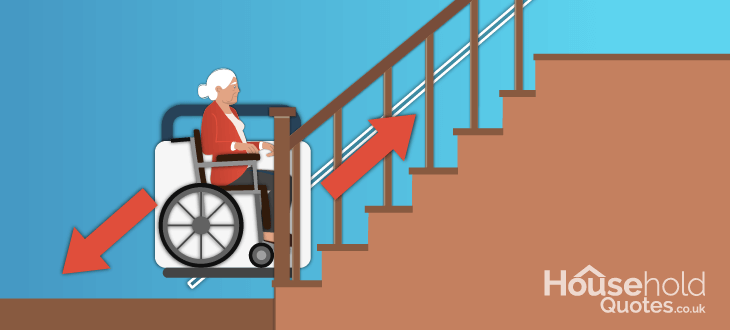
Platform stairlifts, also known as wheelchair stairlifts or vertical platform lifts, are mobility aids designed to transport individuals who use wheelchairs or have difficulty navigating stairs independently.
Unlike traditional stairlifts that carry individuals in seated positions, platform stairlifts accommodate wheelchairs directly, allowing users to remain seated in their wheelchair throughout the journey. These stairlifts offer a practical solution for accessing elevated areas within homes, public buildings, or other facilities where traditional stairlifts may not be suitable.
Among the most expensive options, platform stairlifts require complex, professional installation due to the need for substantial structural modifications. Brands like Terry Lifts and Thyssenkrupp provide robust platform stairlift options, catering to individuals who require this specialized solution. These stairlifts accommodate both seating and standing positions, providing a platform for standing or wheelchair use or those with significantly reduced mobility. Moreover, they are suitable for both indoor and outdoor use, enhancing accessibility in various environments.
However, platform stairlifts come with some drawbacks. They require more space compared to traditional stairlifts and necessitate significant modifications to the home's structure to accommodate the installation. Despite these challenges, for individuals with mobility limitations, platform stairlifts can significantly enhance independence and quality of life by providing access to previously inaccessible areas.
Standing stair lift
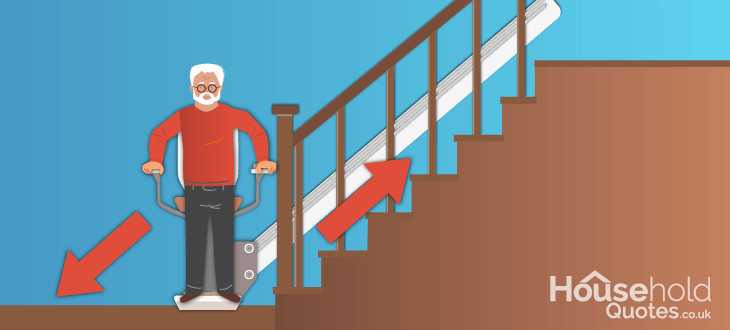
Standing stairlifts, also known as perch stairlifts, are mobility aids designed for individuals who have difficulty sitting or bending their knees but can still stand comfortably. Unlike traditional seated stairlifts, standing stairlifts allow users to remain in a semi-standing position during transit. Installation complexity is similar to straight stairlifts but may require additional considerations for safety.
These stairlifts are suited for individuals who have arthritis, hip problems, or balance issues. Comparable in cost to straight stairlifts, standing stairlifts may vary based on features and customization options. Bespoke options are available from several manufacturers, offering flexibility to meet individual needs. Standing stairlifts offer a compact design, making them ideal for narrow staircases where seating options are not feasible.
However, standing stairlifts are not recommended for those with severe balance issues. Despite this limitation, for individuals who can stand comfortably and require assistance navigating stairs, standing stairlifts provide an effective solution to enhance mobility and independence within the home.
Heavy duty stair lift
Heavy-duty stairlifts are specially designed mobility aids that offer increased weight capacity and durability compared to standard models. They are intended for individuals who exceed the weight limit of typical stairlifts or require additional support due to their size or weight.
This includes larger individuals, bariatric patients, or those with mobility issues compounded by excess weight. This offers increased safety and comfort for larger users. Installation complexity is similar to straight or curved stairlifts, depending on the staircase.
These stair lifts come at a higher cost compared to standard models due to their reinforced design and larger capacity. Brands like Bruno and Handicare offer models specifically designed to support additional weight, providing options for those in need.
Despite their benefits, heavy-duty stairlifts may pose some drawbacks. They are more expensive than standard models and may require more space on the staircase due to their robust design. Nevertheless, for individuals who require the extra support and capacity, heavy-duty stairlifts offer a solution to enhance mobility and accessibility within the home.
Reconditioned stairlifts
Reconditioned stairlifts, also known as refurbished or second-hand stairlifts, are pre-owned stairlifts that have been thoroughly inspected, refurbished, and restored to a like-new condition. These stairlifts offer a cost-effective alternative to purchasing a brand-new unit and provide reliable mobility assistance for users with budget constraints.
Reconditioned stairlifts offer both seating and standing options, depending on the model. Installation complexity varies depending on the type of stairlift, but professional installation is recommended to ensure safety and functionality. These stairlifts are well-suited for budget-conscious individuals seeking a cost-effective mobility solution.
Various brands offer reconditioned models, although availability depends on the market for used stairlifts. One of the main benefits of reconditioned stairlifts is cost savings, with many models offering similar reliability and functionality as new units.
However, there are some drawbacks to consider. Reconditioned stairlifts typically come with a limited warranty and lifespan compared to new models. Additionally, customization options may be limited, especially for curved staircases. Despite these limitations, reconditioned stairlifts provide a practical solution for individuals who require mobility assistance but have budget constraints that prevent them from purchasing a brand-new unit.
Choosing the right stairlift for your home
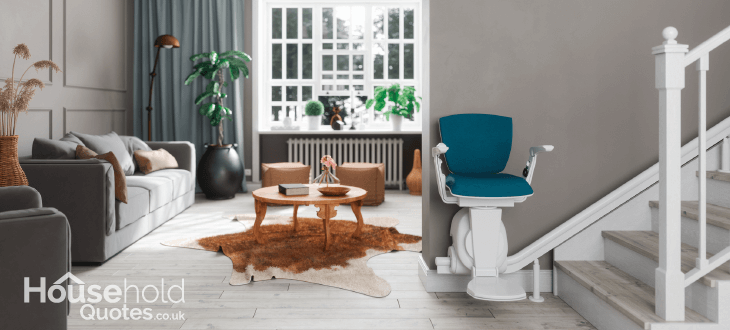
Now that you've become familiar with the different types of stairlifts, it's time to select the most suitable option for you or your family. Choosing the right stairlift for your home in the UK requires careful consideration of several factors to ensure it meets your needs and fits your space appropriately.
Here's a checklist to help you make the right decision:
- Type of stairs: Assess the type of stairs in your home. Whether straight, curved, or narrow, there are different stairlift models designed to accommodate various configurations.
- Intended use: Determine the primary purpose of the stairlift. Are you looking for a permanent solution to aid mobility, or is it for temporary use during recovery from an injury or surgery? or are you in need of senior stairlifts for your aging parents?
- Situation: Consider your unique situation, including any specific mobility challenges or requirements. Factors such as weight capacity, ease of use, and additional features like swivel seats or adjustable armrests should align with your needs.
- Budget: Set a budget for your stairlift purchase or stair lift hire, considering not only the initial cost but also any potential maintenance or servicing expenses. Explore different affordable stairlifts options and financing plans to find the best fit for your budget.
- Mobility needs: Evaluate your mobility needs both now and in the future. Choose a stairlift that provides the necessary support and comfort, taking into account factors such as seating height, armrests, and safety features like seat belts and footrest sensors.
- Space availability: Measure the available space on your stairs to ensure compatibility with the chosen stairlift model. Consider factors such as clearance at the top and bottom of the stairs, as well as any obstacles or obstructions that may impact installation.
By considering these key factors and conducting thorough research, you can choose the right stairlift for your home in the UK that meets your needs, fits your space, and provides reliable support for enhanced mobility and independence.
How much does a stairlift cost?
On average, the cost of a standard straight stairlift typically ranges from £2,000 to £4,000, while a curved or custom-designed stairlift can cost between £4,000 and £10,000 or more.
Here's a breakdown of the average costs for different types of stairlifts in the UK:
| Types of Stair Lift | Average Cost Range (£) |
|---|---|
| Straight | £2,000 - £4,000 |
| Curved | £4,000 - £10,000+ |
| Outdoor | £3,000 - £6,000+ |
| Platform | £4,000 - £10,000+ |
| Standing | £3,000 - £5,000 |
| Heavy Duty | £4,000 - £8,000 |
| Reconditioned | £1,500 - £3,000 |
In the UK, the stair lift cost can vary depending on several factors, including the type of stairs, the specific features and customisation options, and the manufacturer or supplier.
Factors that affect the cost of a stair lift include:
Type of staircase
The nature of your staircase is one of the primary factors affecting the cost. Straight staircases typically require a more straightforward installation with a standard rail, making them less expensive than curved ones. Curved staircases necessitate custom-built rails to match the exact shape and turns of the stairs, significantly increasing the cost.
Length of the staircase
Longer staircases require more materials and potentially more complex installation processes, increasing the overall cost. This is true for both straight and curved staircases, although the impact is more pronounced for the latter.
Stair lift model and brand
Different models and brands come with varying price tags. Basic models with standard features are more affordable, but if you opt for a stair lift from a premium brand or a model that includes advanced features, the price can increase substantially.
Features and specifications
Features such as a folding seat and footrest, a higher weight capacity, a swivel seat for easy dismount, or a slimline design can affect the price. Advanced safety features, such as a seatbelt, obstruction sensors, and a key switch to prevent unauthorised use, can also add to the cost.
Condition (new vs. reconditioned)
A brand-new stair lift will cost more than a reconditioned one. Reconditioned stair lifts are used units that have been refurbished to a high standard, offering a more budget-friendly option without sacrificing quality or safety.
Customisation and aesthetic options
Customising the colour or fabric of the stair lift to match your home decor, or opting for a model that is less obtrusive, can also increase the cost. While not essential, these aesthetic considerations are important for some users.
Installation complexity
The complexity of the installation process can vary based on the layout of your home and the type of staircase. Installations that require structural modifications to your home or extensive electrical work will be more expensive.
Aftercare services and warranty
Extended warranties and aftercare services, such as regular maintenance and emergency call-out services, can add to the initial cost but provide value in the long term by ensuring the stair lift remains in good working order.
Geographical location
Prices can vary by location due to differences in local labour costs, the availability of service providers, and transport costs for the stair lift and installation team.
VAT exemption status
In the UK, qualifying individuals (those with certain medical conditions or disabilities) can purchase stair lifts VAT-free. This can significantly reduce the overall cost, so it's worth investigating whether you or the person using the stair lift qualifies.
It's essential to obtain quotes from multiple suppliers and carefully compare prices, features, and warranty terms before making a decision.
Additionally, some providers offer financing options or assistance with funding through grants or financial assistance programs, which can help offset the cost of a stairlift for those on a tight budget.
How can you finance a stairlift?
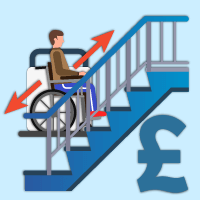
It is possible to find various ways to be able to finance a stair lift. You can look into stair lift hire or renting a stairlift. Financing a stairlift can be a significant concern for individuals seeking mobility assistance in their homes. Here are some tips on how to finance a stairlift:
- Consider NHS assistance: In some cases, the NHS (National Health Service) may provide funding for stairlifts if they are deemed medically necessary and meet specific eligibility criteria. However, NHS funding for stairlifts is limited, and waiting times can be lengthy.
- Qualify for free stairlift: Certain individuals may qualify for a free stairlift through government schemes or charitable organizations. Eligibility criteria often include factors such as financial need, disability status, and the availability of funding in your area.
- Explore council services: Local councils may offer assistance with financing or subsidizing the cost of a stairlift for residents with disabilities or mobility limitations. Contact your local council to inquire about available services and eligibility requirements.
- Research funding options: Explore funding options available from government agencies, charitable organizations, and local councils. Some may offer financial assistance or grants specifically for mobility aids like stairlifts.
- Check with health insurance: Contact your health insurance provider to inquire about coverage for stairlifts. While coverage varies depending on the insurance policy and individual circumstances, some plans may partially or fully cover the cost of a stairlift if it is deemed medically necessary.
- Consider hiring options: If purchasing a stairlift outright is not financially feasible, consider renting or hiring a stairlift instead. Many companies offer rental options with flexible terms, allowing you to pay a monthly fee for the duration of your use.
By researching available funding options and exploring alternative financing methods, you can find a solution that makes a stairlift more accessible and affordable for your needs.
It's essential to thoroughly investigate each option, consider your budget and circumstances, and seek assistance from relevant organizations or professionals as needed.
Get quotes for best stair lift deals
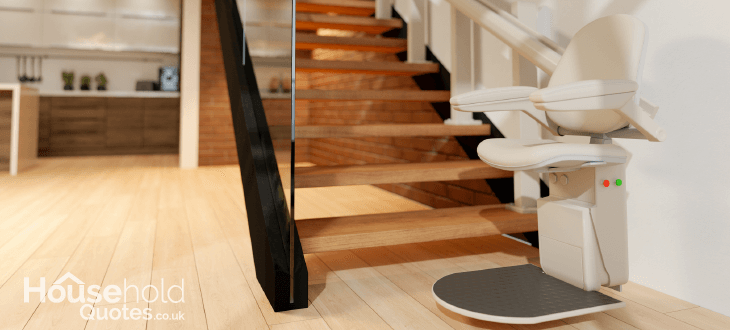
When you are thinking of buying stair lifts, you need to compare multiple quotes for the best deal. Getting multiple quotes for your stair lift in the UK is crucial for making an informed decision and finding the best solution to meet your needs.
Here's a summary of why obtaining multiple quotes is beneficial:
- Cost comparison: By obtaining quotes from multiple stairlift providers, you can compare costs and find the most competitive pricing for your budget. This allows you to ensure you're getting the best value for your money.
- Variety of options: Different stair lift companies may offer various models, features, and customisation options. Getting multiple quotes allows you to explore a wider range of options and choose the stair lift that best suits your needs and preferences.
- Expert advice: When you request quotes from multiple providers, you have the opportunity to speak with knowledgeable representatives who can offer guidance and advice based on your specific requirements. They can help you understand your options and make informed decisions.
- Quality assurance: Researching multiple stair lift companies gives you insights into their reputations, customer reviews, and track records. This allows you to select a reputable provider known for delivering high-quality products and excellent customer service.
We understand the importance of finding the right stair lift for your home. That's why we connect you to stairlift providers tailored to your needs and budget. Our experienced team is dedicated to providing personalised service and expert guidance throughout the selection process.
Check our website for multiple quotes and take the first step toward enhancing your mobility and independence with a stair lift solution.
- Describe your needs
- Get free quotes
- Choose the best offer
It only takes 30 seconds

FAQ
On average, a straight stair lift may cost between £2,000 to £4,000, while a curved stair lift can range from £4,000 to £10,000 or more. The cost of a stair lift can vary depending on factors such as the type of your stairs (straight or curved), additional features, and customization options.
Qualifications for a free stairlift may vary depending on the provider and available funding sources. Generally, eligibility is based on factors such as financial need, disability status, and the availability of funding in your area. Contact local charities, government agencies, or disability support organizations for information on available assistance programs.
While some individuals may receive funding for a stairlift through the NHS (National Health Service) if it’s deemed medically necessary, NHS funding for stairlifts is limited, and eligibility criteria are strict. The process often involves assessments by healthcare professionals to determine medical need and eligibility.
Yes, there are alternative mobility solutions for individuals who have difficulty navigating stairs. Alternatives may include home modifications such as installing a stair ramp, relocating to a single-story dwelling, or using a wheelchair lift or elevator if feasible.
Generally, straight stairlifts tend to be more affordable compared to curved or custom-designed stairlifts. However, the exact cost will depend on various factors, including the specific features and customization options chosen.
While it may be possible to purchase a stair lift directly from a manufacturer or supplier, installing it yourself is not recommended. Stair lift installation requires specialized knowledge and skills to ensure proper fit, safety, and functionality. It’s advisable to have a professional installer handle the installation to avoid potential safety risks and ensure compliance with relevant regulations.

Swathi’s journey in the field of content creation began with her education in journalism, where she developed a deep understanding of the power of words and the importance of effective communication.
